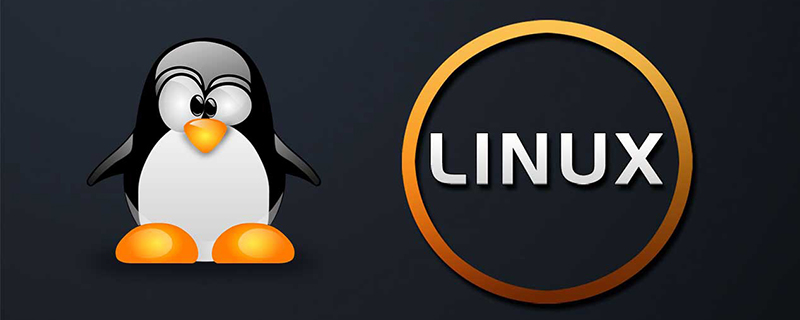Linux是一种免费使用和自由传播的类UNIX操作系统,是一个基于POSIX的多用户、多任务、支持多线程和多CPU的操作系统;通过Linux可以配置出合适的开发环境,可以简化开发过程,减少开发中仿真工具的障碍,使系统具有较强的移植性。

本文操作环境:linux5.9.8系统、Dell G3电脑。
每台台式计算机都使用操作系统。目前使用的最流行的操作系统是:Windows、Mac OS、UNIX。
Linux是一个操作系统。操作系统是计算机程序,是计算机在打开机器时执行的第一个软件。操作系统将自身加载到内存中,并开始管理计算机上可用的资源。然后,它将这些资源提供给用户想要执行的其他应用程序。
操作系统提供的典型服务包括:
任务调度程序 - 任务调度程序能够将CPU的执行分配给许多不同的任务。其中一些任务是用户运行的不同应用程序,其中一些是操作系统任务。任务计划程序是操作系统的一部分,它允许您在一个窗口中打印文档,同时在另一个窗口中下载文件并在第三个窗口中重新计算电子表格。
内存管理器 - 内存管理器控制系统的RAM,通常使用硬盘上的文件创建更大的虚拟内存空间。
磁盘管理器 - 磁盘管理器创建并维护磁盘上的目录和文件。当您请求文件时,磁盘管理器将其从磁盘中引入。
网络管理器 - 网络管理器控制在计算机和网络之间移动的所有数据。
其他I / O服务管理器 - 操作系统管理键盘,鼠标,视频显示器,打印机等。
安全管理器 - 操作系统维护计算机文件中信息的安全性,并控制谁可以访问计算机。
操作系统通常还为系统提供默认用户界面。Windows 98的标准“外观”包括“开始”按钮,任务栏等.Mac OS为Macintosh计算机提供了完全不同的外观。
Linux既是一种操作系统,也是一种现象。要理解为什么Linux变得如此受欢迎,了解一下它的历史是有帮助的。UNIX的第一个版本最初是几十年前开发的,主要用作大学的研究操作系统。像Sun这样的公司的高性能桌面工作站在20世纪80年代激增,它们都基于UNIX。许多公司进入工作站领域与Sun竞争:HP,IBM,Silicon Graphics,Apollo等。不幸的是,每个公司都拥有自己的UNIX版本,这使得软件销售变得困难。Windows NT是微软对这个市场的回应。NT提供与UNIX操作系统相同的功能 - 安全性,支持多个CPU,大规模内存和磁盘管理等。
微软进入高端工作站竞技场创造了一种奇怪的动态。独立公司拥有的专有操作系统以及UNIX世界中缺乏中央权限削弱了UNIX,但很多人都遇到了微软的个人问题。Linux进入了这个奇怪的环境并引起了很多关注。
由Linus Torvalds创建的Linux内核免费提供给全世界。然后Torvalds邀请其他人加入内核,只要他们免费提供他们的贡献。成千上万的程序员开始致力于增强Linux,并且操作系统迅速发展。因为它是免费的并且可以在PC平台上运行,所以它很快就会在硬核开发人员中获得相当大的受众。
Linux有一个专门的追随者,并吸引了几个不同类型的人:
已经了解UNIX并希望在PC类型硬件上运行它的人
想要体验操作系统原理的人
需要或希望对其操作系统进行大量控制的人
与微软有个人问题的人
通常,Linux比Windows更难管理,但提供了更多的灵活性和配置选项。
Linux优点
1.Linux由众多微内核组成,其源代码完全开源;
2.Linux继承了Unix的特性,具有非常强大的网络功能,其支持所有的因特网协议,包括TCP/IPv4、TCP/IPv6和链路层拓扑程序等,且可以利用Unix的网络特性开发出新的协议栈;
3.Linux系统工具链完整,简单操作就可以配置出合适的开发环境,可以简化开发过程,减少开发中仿真工具的障碍,使系统具有较强的移植性;
【推荐学习:linux视频教程】
以上就是linux是做什么的的详细内容,更多请关注php中文网其它相关文章!

每个人都需要一台速度更快、更稳定的 PC。随着时间的推移,垃圾文件、旧注册表数据和不必要的后台进程会占用资源并降低性能。幸运的是,许多工具可以让 Windows 保持平稳运行。

Copyright 2014-2025 https://www.php.cn/ All Rights Reserved | php.cn | 湘ICP备2023035733号